-
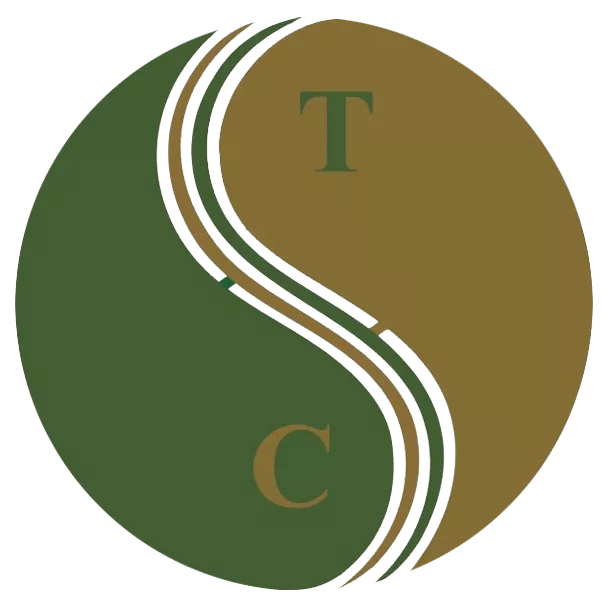 Art of Wellness Acupuncture & Traditional Chinese Medicine (TCM)11704 Wilshire Blvd, Suite 295, Los Angeles, CA, 90025
Art of Wellness Acupuncture & Traditional Chinese Medicine (TCM)11704 Wilshire Blvd, Suite 295, Los Angeles, CA, 90025
myartofwellness@gmail.com310-451-5522 Office Hours
MonClosedTue7:30 am --4 pmWed7:30 am --4 pmThu7:30 am -- 4 pmFri7:30 am -- 4 pmSat7:30 am -- 4 pmSunClosedOur office opens from Tuesdays to Saturdays 7:30 am to 4 pm, will be closed on Memorial day, Independent day, Labor day, Thanksgiving day, Christmas and New year.
-
Recent Posts
- How to Treat Rosacea With Acupuncture and TCM
- How to Treat Perioral Dermatitis With Acupuncture and TCM
- Lymphatic Drainage With Acupuncture and TCM
- How to Treat Turf Toe With Acupuncture
- How to Treat Nerve Pain With Acupuncture and TCM
- How to Treat Watery Eyes With Acupuncture and TCM
- How to Treat Ovarian Cysts With Acupuncture and TCM
- How to Treat Dystonia With Acupuncture and TCM
- Can Acupuncture Help Bad Breath?
- How to Treat Atopy with Acupuncture and TCM
- Plantar Fasciosis Treatment With Acupuncture and TCM
- How to Protect Yourself When Air Quality Is Poor
- How to Treat Spinal Headache With Acupuncture and TCM
- How to Treat Sarcoidosis With Acupuncture and TCM
- How to Treat Flu With Acupuncture and TCM
- Chinese New Year 2025 Year of the Snake
- Sign up to receive news and updates and get my free report:“The Top 10 Reasons to Try Acupuncture”

July 2025 M T W T F S S 1 2 3 4 5 6 7 8 9 10 11 12 13 14 15 16 17 18 19 20 21 22 23 24 25 26 27 28 29 30 31
Diet
How to Treat Perioral Dermatitis With Acupuncture and TCM
By Xiaomei Cai, L.Ac., Ph.D. and Qineng Tan, L.Ac.

Itchy red bumps around mouth, nose, or under eyes? Perioral dermatitis is a common inflammatory skin condition that shows up as a red, bumpy rash on the face. Acupuncture and TCM offers a holistic way to help get rid of perioral dermatitis.
What Is Perioral Dermatitis?
Perioral dermatitis is a type of face rash that primarily affects the area around the mouth (perioral), though it can also show up around the nose (perinasal dermatitis) and eyes (periorbital dermatitis). This condition is most commonly seen in women aged 20–45, but it can affect men and children as well. It’s considered a form of rosacea or a rosacea-like condition by many dermatologists, though it has its own distinct features.
Unlike acne, the red bumps in perioral dermatitis don’t contain pus, and unlike eczema, the rash is not typically scaly or flaky. It often appears suddenly and can be persistent, sometimes lasting for weeks or months.
Traditional Chinese Medicine (TCM), including acupuncture and herbal therapy, offers a natural approach to different types of dermatitis that focuses on healing the skin and addressing underlying imbalances that cause this condition.
Top 5 Symptoms of Perioral Dermatitis
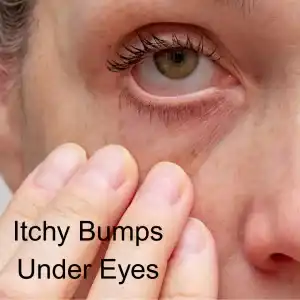
Perioral dermatitis can sometimes be mistaken for other health issues that cause skin rashes or other skin conditions, such as: acne, herpes, rosacea, contact dermatitis, seborrheic dermatitis, discoid lupus, and papula sarcoidoisi. The most common signs of Perioral Dermatitis include:
- Red, inflamed bumps around the mouth, nose, or eyes
- Burning or itching sensation in the affected area
- Dry, tight, or peeling skin
- Clear fluid or pus in some bumps (though usually not like acne)
- Rash that spares the skin directly around the lips (creating a clear border)
Typically, perioral dermatitis will become worse with use of corticosteroid creams or heavy moisturizers.
It is important to recognize this condition, so that it can be treated appropriately.
What Causes Perioral Dermatitis?
The exact cause of perioral dermatitis is not fully understood, but several triggers and contributing factors have been identified. People who already suffer from eczema may be more prone to developing perioral dermatitis, because eczema can affect the skin barrier. Here are some of the things that might trigger an perioral dermatitis outbreak or flare up:
Topical corticosteroid use – This is the most common trigger. Long-term use of steroid creams, even over-the-counter hydrocortisone, can lead to this rash.
Hormonal changes – Many people who menstruate notice flare-ups around their menstrual cycle or during times of hormonal fluctuation.
Use of heavy facial creams or cosmetics – Occlusive skin products may block pores and irritate the skin.
Fluoridated toothpaste – Some people find their symptoms worsen with fluoride-containing toothpaste.
Environmental triggers – Sun exposure, wind, and heat can aggravate the skin.
Microbial imbalance – Overgrowth of certain bacteria or yeast on the skin may play a role.
Stress – Emotional stress can weaken the immune system and disrupt skin balance.
Dietary factors – Some people report flares related to certain foods, like spicy foods or alcohol.
Diagnosis and Treatment for Perioral Dermatitis
In a conventional medical setting, diagnosis is typically made based on a visual exam and patient history. A dermatologist may ask about what kinds of skincare products you use, medications (especially steroid use), and recent lifestyle changes.
Standard treatments include:
Discontinuation of steroid creams – Although this may cause a rebound flare, it is essential to stop steroid use.
Topical antibiotics or anti-inflammatory creams – Such as metronidazole or clindamycin.
Oral antibiotics – Like tetracycline or doxycycline, especially for more stubborn cases.
Skin care guidance – Patients are usually advised to stop all current products and switch to a minimalist routine with gentle cleansers and no makeup.
While these treatments can be effective, they don’t always address the root cause, and relapses are common—especially if underlying imbalances are not corrected.
TCM for Perioral Dermatitis

Traditional Chinese Medicine sees perioral dermatitis not just as a skin problem, but as a sign of deeper internal disharmony. In TCM, the health of the skin is closely related to the health of the Lung, Stomach, and Spleen organ systems. When there is heat, dampness, or toxicity trapped in the body, it can manifest as inflammation on the skin.
For example, a rash around the mouth is often related to Stomach Heat or Spleen Dampness, especially if digestion is weak or the diet is rich in spicy or greasy foods. If the rash appears around the nose and cheeks, Lung Heat or Wind-Heat may be contributing factors.
TCM also considers emotional stress and hormonal imbalance as key factors in skin conditions. Emotional stress can create stagnation in the Liver system, while hormonal changes may disrupt the balance of Yin and Yang in the body, leading to heat and inflammation.
Can Acupuncture Help Perioral Dermatitis?
Acupuncture and TCM therapies aim to treat the root cause of perioral dermatitis while also calming the skin and promoting healing.
Acupuncture helps regulate the immune system, reduce inflammation, and rebalance the organ systems involved. Specific acupuncture points may be used to clear heat, drain dampness, and support the Spleen and Lung.
Chinese herbal medicine can be customized to each patient’s individual pattern. Herbal formulas will be customized for each individual, depending on the presentation.
Dietary and lifestyle recommendations are often part of treatment, helping patients avoid inflammatory foods, support digestion, and reduce stress.
Facial gua sha and herbal washes can be used as topical therapies to calm redness, promote lymphatic drainage, and soothe irritated skin.
In many cases, patients find that their rash improves significantly with a few weeks of consistent acupuncture and herbal therapy—without the side effects of antibiotics or topical steroids.
While studies specifically on acupuncture for perioral dermatitis are limited, research shows that acupuncture is effective in treating other inflammatory skin conditions like eczema, acne, and rosacea. These studies demonstrate that acupuncture can reduce inflammation, balance hormones, and modulate the immune system, which are all key factors in healing perioral dermatitis.
A review found that acupuncture reduced itch, redness, and lesion count in patients with atopic dermatitis. Another study noted improvement in acne symptoms with acupuncture and herbal medicine, especially in women with hormonal imbalances.
Acupuncture Near Me for Perioral Dermatitis in West Los Angeles
If you’ve been struggling with persistent or recurring perioral dermatitis and are looking for a more holistic, drug-free way to manage your symptoms, acupuncture and Traditional Chinese Medicine offer a safe and effective alternative. By treating both the surface symptoms and the internal imbalances, we help the skin heal from the inside out.
At Art of Wellness Acupuncture, we specialize in treating chronic skin conditions like perioral dermatitis using the principles of Traditional Chinese Medicine. Every treatment is tailored to your unique constitution and lifestyle, so you can heal naturally and prevent future flare-ups. If you’re dealing with red, itchy bumps around your mouth or face, don’t wait—reach out today to schedule your consultation and get started on the path to clearer, calmer skin.
*This article is for education from the perspective of Traditional Chinese Medicine only. The education provided by this article is not approved by FDA to diagnose, prevent, treat and cure human diseases. It should not stop you from consulting with your physician for your medical conditions. Traditional Chinese Medicine is based on Qi, which is an invisible force that usually cannot be observed by modern science. Because science focuses on testing ideas about the natural world with evidence obtained through observation, these aspects of acupuncture can’t be studied by science. Therefore acupuncture and Chinese herbs are often not supported by double-blind, randomized trials, and they are considered alternative medicine therapies in the United States.
Can Acupuncture Help Bad Breath?
By Qineng Tan, L.Ac., Ph.D. and Xiaomei Cai, L.Ac., Ph.D.

Dry mouth, coated tongue? Bad taste in your mouth, breath is always bad? There may be a deeper reason behind halitosis. Acupuncture and TCM can help correct the internal imbalances that are the root cause of bad breath.
How To Get Rid of Bad Breath
Looking for how to get rid of bad breath? Conventional medicine often sees bad breath as a dental issue, related to oral hygiene, gum disease, and bacteria on your tongue and in your mouth.
Recommendations for treating bad breath typically include using antibacterial mouth rinses and toothpastes, scraping your tongue, and flossing.
But what causes bad breath and dry mouth?
Bad Breath Causes
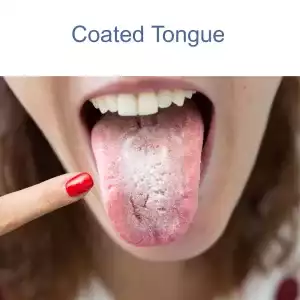
There are many health conditions that can cause bad breath, including:
- GERD – with acid reflux, some of the contents of the stomach come back up into the esophagus, which can smell strong.
- Diabetes – contributes to gum disease and bacterial growth in the mouth because of high glucose levels and poor blood flow to gums.
- Liver disease – breath may have a sulfurous, rotten egg smell, because toxins are not being adequately filtered by the liver.
- Kidney disease – can cause a metallic taste in the mouth, because minerals are not being filtered out through the kidneys.
- Sjogren’s Syndrome – parotid gland dysfunction leads to dry mouth.
- Sinusitis – mucus from sinus infection can smell bad as it drips into the back of the throat.
- Tonsillitis or tonsil stones – infected pus around the membranes of the tonsils can smell.
Other symptoms that often accompany bad breath include:
- Burning sensation on the tongue
- Need to clear your throat all the time
- Buildup on teeth, coated tongue
- Thick saliva
- Bad taste in mouth: metallic taste, sour taste, or bitter taste
Addressing these health issues can help clear up halitosis. But, what if you are experiencing frequent bad breath, and none of these health problems are the cause?
Underlying Causes of Bad Breath

According to TCM theory, bad breath usually arises from imbalances in the internal organ systems. Acupuncture treatment and herbal remedies can address the root causes of bad breath, so that it doesn’t come back.
In TCM, we consider “heat,” “wind,” “dampness,” “dryness,” and so on to be pathogenic factors that can either get into the body from external causes, or arise within the organ systems due to imbalances in Yin and Yang energies, or the obstruction or stagnation of Qi (life force energy).
Dryness and heat are the primary pathogenic factors that might lead to bad breath becoming a problem.
These words sound metaphorical, but they describe the nature of how problems occur within the human body and produce various symptoms. “Fire” or “heat” produces redness, swelling, eruptions of red bumps, thirst, excessive acid, etc.
When we say that pathogenic factors can arise from within, we are also acknowledging that emotions affect our physical and mental health, and vice versa.
Liver fire, or excess Yang energy in the Liver, for example, can arise due to dietary habits, like too much spicy food, or changes in weather, like warming temperatures in the springtime.
Liver heat is also related to feelings of anger and frustration. So, a lot of emotional stress and repressed anger can lead to liver fire problems.
Hot weather can contribute to feeling irritable. We must look at all sides of the problem in order to treat Liver fire and reduce uncomfortable symptoms, like trouble sleeping, and dry mouth.
Patterns of disharmony that can lead to bad breath as a symptoms include:
- Dry Intestine – leads to constipation and dry stool, dry throat and mouth, dizziness, hemorrhoids
- Stomach heat – thirsty all the time, craving for cold drinks, hungry all the time, canker sores, stomach pain, acid reflux, vomiting, feeling hot, acne breakouts
- Excess phlegm – tightness in chest, brain fog, dizziness
Sometimes one imbalance can lead to another. For example, liver fire can lead to fire in the lungs, causing chest pains and respiratory problems. Liver fire moving into the heart can cause angry outbursts, dry throat, and a bitter taste in your mouth.
TCM Nutrition to Address Bad Breath
Rather than simply telling you not to eat garlic, your acupuncturist will talk with you about eating the right foods to cool down the specific type of heat that is affecting your health. In TCM, we view certain foods as being “warming” or “cooling.” Eating more cool and neutral foods and avoiding heat-producing foods can help with halitosis.
An acupuncture practitioner will also assemble an herbal formula designed to address the organ system imbalances that seem to be causing problems.
Acupuncture Near Me for Bad Breath in West Los Angeles
Having bad breath can impede your social life and even your career. Experiencing dry mouth on a regular basis is very uncomfortable. It is important to address these issues, as they are likely an indication that there is something happening deeper under the surface. Please do not hesitate to reach out to us at Art of Wellness Acupuncture in Los Angeles, so that we can resolve this issue and help you feel better and more confident in your day to day life.
*This article is for education from the perspective of Traditional Chinese Medicine only. The education provided by this article is not approved by FDA to diagnose, prevent, treat and cure human diseases. It should not stop you from consulting with your physician for your medical conditions. Traditional Chinese Medicine is based on Qi, which is an invisible force that usually cannot be observed by modern science. Because science focuses on testing ideas about the natural world with evidence obtained through observation, these aspects of acupuncture can’t be studied by science. Therefore acupuncture and Chinese herbs are often not supported by double-blind, randomized trials, and they are considered alternative medicine therapies in the United States.
How to Treat Cirrhosis With Acupuncture and TCM
By Qineng Tan, L.Ac., Ph.D. and Xiaomei Cai, L.Ac., Ph.D.
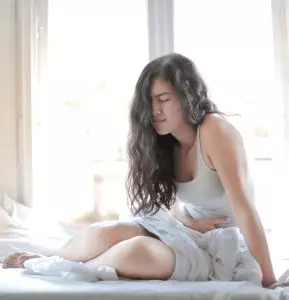
Tired all the time? Upper right abdominal pain? Itchy skin? Muscle cramps? These can be cirrhosis of the liver symptoms. Acupuncture and TCM can help relieve liver pain due to cirrhosis and help to improve liver function.
Cirrhosis of the liver is a serious and progressive condition characterized by the scarring of liver tissue, which can lead to liver failure over time. This condition can be caused by various factors, like chronic viral hepatitis infections, primary biliary cirrhosis, and long-term alcohol overuse (alcoholic cirrhosis).
Other conditions that cause cirrhosis include: cystic fibrosis, autoimmune hepatitis, non-alcoholic fatty liver disease, hemochromatosis (iron buildup), and primary biliary cholangitis (hardening of the bile ducts).
The liver is a vital organ responsible for detoxifying harmful substances from the body, producing bile to aid in digestion, and storing nutrients. When cirrhosis of the liver occurs, these functions are significantly impaired, which can lead to a wide range of health problems.
Cirrhosis of the liver symptoms can vary depending on the severity and progression of the disease. Many people have liver cirrhosis without realizing it, as it is possible to have cirrhosis for years without being symptomatic.
Top 10 Symptoms of Cirrhosis of the Liver
Cirrhosis symptoms include:
- Bruise easily, bleed easily
- Nausea
- Fatigue, drowsiness
- Lack of appetite
- Itchy skin, pruritus
- Edema in legs, edema in ankles, edema in feet
- Jaundice – yellow eyes, yellow skin
- Spider veins
- Pale fingernails, clubbed fingers, red palms
- Cognitive difficulties, slurred speech
Cirrhosis can affect menstruation, causing irregular periods or no period, and cause female infertility. Cirrhosis can also affect sexual function (erectile dysfunction/ED), libido and male fertility.
In its early stages, cirrhosis may present with mild or no symptoms, making it challenging to diagnose without medical testing.
An enlarged spleen can be a symptom of liver cirrhosis.
As the condition advances, cirrhosis symptoms will usually worsen, signaling the need for intervention.
4 Stages of Liver Disease
It is important to recognize the stages of cirrhosis of the liver. Early intervention can help slow down the progression of liver disease.
- Stage I: Steatosis (Fatty Liver) – The first stage involves inflammation of the bile duct or liver. Abdominal pain is often the first sign. If not treated, the inflammation can damage the liver. Symptoms and inflammation are usually treatable at this stage, preventing progression to stage II.
- Stage II: Fibrosis (Liver Scarring) – Many people don’t notice symptoms until stage II or III. In this stage, scarring begins to block the normal blood flow in the liver. The liver doesn’t function properly, but with treatment, it can still recover and slow down the disease.
- Stage III: Cirrhosis – Cirrhosis occurs when scar tissue replaces healthy liver tissue. This happens over several years due to untreated disease or infection. The liver becomes hard and lumpy, making it difficult for blood to flow through it. The blocked blood flow can also affect the spleen, causing additional issues.
- Stage IV: Liver Failure – At this final stage, the liver stops functioning. Immediate medical intervention is needed to prevent fatal outcomes.
Early diagnosis and treatment for cirrhosis are crucial to prevent further liver damage and manage cirrhosis effectively. Acupuncture and TCM offer an alternative treatment for cirrhosis to help restore liver function.
Medical Treatment for Liver Cirrhosis
Cirrhosis treatment focuses on slowing the progression of the disease, managing liver cirrhosis symptoms, and preventing complications. The specific approach can vary depending on the underlying cause of cirrhosis, such as hepatitis, alcoholic liver disease, or nonalcoholic fatty liver disease.
Common conventional treatments and strategies used to manage liver cirrhosis include medications to reduce inflammation and manage symptoms.
For cirrhosis caused by chronic hepatitis B or C, antiviral medications can help reduce liver inflammation and prevent further liver damage.
Diuretics are often prescribed to reduce fluid retention and swelling (edema) in the legs and abdomen (ascites). Paracentesis is a procedure that drains excess fluid from the abdomen in cases of severe ascites.
Beta-blockers decrease the risk of bleeding from esophageal varices (enlarged veins in the esophagus) by lowering blood pressure in the portal vein.

Frequent blood tests, imaging studies (such as ultrasounds), and endoscopies to monitor liver function and detect complications early.
In cases where cirrhosis progresses to end-stage liver disease and liver function is severely compromised, a liver transplant is sometimes the only option. This involves replacing the damaged liver with a healthy one from a donor.
For alcoholic cirrhosis, abstaining from alcohol is crucial. Medical support, counseling, and rehabilitation programs can aid in alcohol cessation.
Lifestyle modifications, including a healthy diet, weight loss, and regular exercise, are essential for patients with nonalcoholic fatty liver disease (NAFLD) related cirrhosis. Eating a balanced diet low in sodium to reduce fluid retention and avoiding alcohol and substances that can further harm the liver.
By combining these treatments, healthcare providers aim to manage cirrhosis effectively, improve the quality of life, and extend the lifespan of individuals with this chronic condition. However, some of the medications recommended for cirrhosis, such as antiviral drugs and diuretics, can potentially cause harm to other organ systems and do not serve to address the deeper root causes of liver dysfunction. Acupuncture and TCM offer a holistic treatment for cirrhosis that takes the whole body into account.
Can Acupuncture Help Cirrhosis?
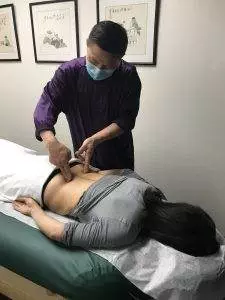
According to TCM theory, the liver is responsible not only for removing toxins from the bloodstream and body; it also disperses nutrients and medicinal substances throughout the body.
In modern life, people’s livers have to work much harder to process all of the chemicals and other toxins to which we are exposed on a daily basis. When the liver is overtaxed, it cannot provide adequate energy and nutrition, and it may not be able to eliminate all of the toxins.
This buildup of chemicals and unhealthy “food” substances in the liver contributes to the formulation of scar tissue in the liver.
Symptoms such as nausea and vomiting, diarrhea, itchy skin or skin rashes indicate that the liver is trying to purge toxins. When the liver cannot expel enough of the toxins, they will begin to affect the kidneys, too.
Medical treatments that aim to get rid of rashes or other symptoms may help the person feel more comfortable, but they do not help the root cause of the problems in the liver; they only cover them up. The use of antiviral and antibiotic medications, likewise, may seem to be taking care of infections, but they are potentially causing further damage to the organs.
In TCM, internal pathogens like cold, damp, and stagnation affecting the organ systems contribute to disease. Liver disease is not only about the liver, but also the kidneys, heart, stomach, and spleen. Symptoms like stomach distension, edema in the legs and feet, varicose veins or spider veins, and jaundice occur because of deficiencies in the various organs.
An acupuncturist will listen and observe each individual’s symptoms carefully to see which organs are affected. The TCM treatment plan will then involve acupuncture treatment and herbs to help strengthen all of the organs (heart, kidney, spleen and stomach), not just the liver.
A review of 15 studies in China in which TCM was used to treat liver cirrhosis concluded that acupuncture is effective both as a primary treatment and an adjunct treatment for chronic liver disease, helping to relieve symptoms and improve liver function.
If acupuncture treatment is sought before there is too much liver damage, TCM can help slow the progression of the disease and reduce painful symptoms.
One study showed that four weeks of electro-acupuncture treatment helped to reduce muscle cramps in liver cirrhosis patients.
Acupuncture helps to treat the underlying conditions that cause cirrhosis, including hepatitis, and fatty liver disease.
Another study showed that patients who received acupuncture treatment in addition to conventional treatment for liver cirrhosis showed less liver fibrosis (scarring) and fewer gastrointestinal symptoms than patients who only received conventional treatment.
Most doctors will advise patients with liver disease to quit drinking and cut out certain foods. Acupuncturists have expertise in nutrition that allows them to give each patient personalized care when deciding what dietary changes need to be made. Acupuncture treatment can also be very helpful when people are ready to cut out alcohol and eat the right foods to help improve liver health.
Acupuncture Near Me for Cirrhosis in West Los Angeles
TCM has been used to help improve liver health for many centuries. Acupuncture and Chinese herbs can help address liver problems of all kinds. At Art of Wellness, we are able to help patients improve liver function and feel better through acupuncture, customized herbal formulas, and individualized nutritional counseling.
*This article is for education from the perspective of Traditional Chinese Medicine only. The education provided by this article is not approved by FDA to diagnose, prevent, treat and cure human diseases. It should not stop you from consulting with your physician for your medical conditions. Traditional Chinese Medicine is based on Qi, which is an invisible force that usually cannot be observed by modern science. Because science focuses on testing ideas about the natural world with evidence obtained through observation, these aspects of acupuncture can’t be studied by science. Therefore acupuncture and Chinese herbs are often not supported by double-blind, randomized trials, and they are considered alternative medicine therapies in the United States.
How to Treat SIBO With Acupuncture and TCM
by Qineng Tan, L.Ac., Ph.D. and Xiaomei Cai, L.Ac., Ph.D.

Abdominal pain, bloating, diarrhea? These can be SIBO symptoms. SIBO, or small intestinal bacterial overgrowth, can cause bloated stomach, abdominal cramps and pain. Acupuncture and TCM can offer alternative SIBO treatment and bloating relief.
Small Intestinal Bacterial Overgrowth (SIBO) is a condition in which an abnormal increase in the population of bacteria occurs in the small intestine.
Unlike the large intestine, which is rich in bacterial flora essential for digestion and immune function, the small intestine typically contains relatively few bacteria. When these bacteria proliferate excessively in the small intestine, they can disrupt normal digestion and nutrient absorption, leading to a variety of uncomfortable and sometimes debilitating symptoms.
Problems with gut motility also contribute to SIBO symptoms. Peristalsis is the process by which the smooth muscle tissues in the intestine move food matter through the gastrointestinal tract. When peristalsis isn’t happening the way it should, this is known as dysmotility. This can lead to stagnation of food matter in the intestine, which allows for an overgrowth of bacteria to build up. This in turn can causes hydrogen and methane gas to be produced by the fermentation of carbohydrates that are stagnant in the small intestine. This excess gas causes painful bloating and distension of the abdomen.
SIBO can cause a range of digestive symptoms, such as bloated stomach, abdominal pain, diarrhea, constipation, and malabsorption of nutrients from food, which can result in unwanted weight loss and nutritional deficiencies. Vitamin B12 deficiency is particularly common among people suffering from SIBO.
Other symptoms, seemingly unrelated to the gastrointestinal system, can include: fatigue, headache, low fever, and rosacea.
SIBO is often associated with other health issues, including irritable bowel syndrome (IBS), celiac disease, and diabetes.
Acupuncture and TCM can work as an adjunct or alternative treatment for SIBO symptoms.
This can lead to hydrogen and methane gas being produced by the fermentation of carbohydrates that are stagnant in the small intestine. This excess gas can cause painful bloating and a distended abdomen.
What Causes SIBO?
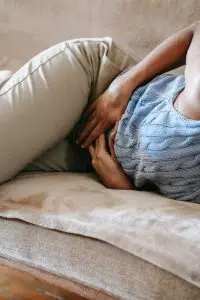
A wide variety of different issues can play a role in the development of SIBO. Many conditions may cause problems with the secretion of gastric acids, with motility of the small intestine, gut immune function, and structural issues related to surgeries, injuries, or other abnormalities of the intestine.
Conditions that may contribute to SIBO include:
- Gastroparesis due to diabetes, or connective tissue disorders, viral infection, or ischemia
- Cirrhosis
- Chronic renal failure
- Scleroderma
- Crohn’s disease
- Celiac disease
- Recurrent rounds of antibiotics
- Excessive consumption of alcohol
- GI tract surgeries that create structural abnormalities
- Immune deficiencies of T-cell or antibody responses
What’s the Difference Between IBS and SIBO?
Symptoms of SIBO are very similar to IBS symptoms, and it is possible for a person to have both IBS and SIBO at the same time. The difference between SIBO and irritable bowel syndrome is that IBS is a functional syndrome stemming from issues in the large intestine, whereas SIBO occurs in the small intestine.
One review of studies showed that the incidence of SIBO among patients with IBS is much higher than among people who don’t have IBS symptoms. The exact link between IBS and SIBO has not yet been clarified by medical science.
Medical Treatment for SIBO
In Western medicine, the treatment of SIBO typically involves a multi-faceted approach aimed at reducing the bacterial overgrowth, addressing the underlying causes, and managing symptoms.
Along with trying to find and address any underlying conditions that may be causing or contributing to SIBO, the mainstays of conventional treatment include antibiotics and medications to help improve gut motility.
The primary treatment for SIBO is the use of antibiotics to reduce the bacterial load in the small intestine. Commonly prescribed antibiotics include rifaximin, metronidazole, and ciprofloxacin. These antibiotics are chosen for their ability to target the small intestine bacteria while minimizing disruption to the rest of the gut microbiota.
Unfortunately, while antibiotics may help reduce bacteria, but they can also come with unwanted side effects. Rifaximin can cause bladder pain, urinary frequency, difficulty urinating, and cloudy urine. It can also contribute to feelings of anxiety, dizziness, headaches, fast breathing, fast heartbeat, and problems sleeping.
Antibiotics do not necessarily ease symptoms like gas and bloating, and can cause constipation and black, tarry stool.
Prokinetics are medications that help improve gut motility, ensuring that food and bacteria move efficiently through the digestive tract, which can help prevent bacterial stasis and overgrowth. Common prokinetics include erythromycin in low doses, prucalopride, and metoclopramide.
Dietary modifications will usually be recommended to help manage SIBO. Patients are often advised to follow specific diets such as the low FODMAP diet, which reduces the intake of fermentable carbohydrates that can feed bacterial overgrowth. Other dietary approaches may include the Specific Carbohydrate Diet (SCD) or an elemental diet, which involves consuming easily digestible, nutrient-rich formulas.
It can be difficult for people to follow a SIBO diet, and many physicians are not able to spend the time with patients that is required to properly support these behavioral changes. Without dietary support, the antibiotics and prokinetics may not do enough to get rid of SIBO.
Successful treatment of SIBO often requires addressing any underlying conditions that contribute to bacterial overgrowth. This could involve treating gastrointestinal motility disorders, managing chronic pancreatitis, or addressing structural abnormalities such as strictures or diverticula.
By understanding the underlying causes and employing a comprehensive treatment strategy, conventional medicine aims to alleviate symptoms and reduce the recurrence of SIBO. However, due to the chronic nature of the condition and the complexity of the gut microbiome, many patients seek complementary treatments such as acupuncture and herbal medicine to support their overall gut health and enhance the effectiveness of their treatment plan.
Can Acupuncture Help SIBO?
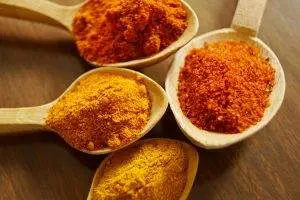
Chinese herbal medicine has its own way of helping to relieve SIBO, improve motility and digestion, and soothe uncomfortable stomach pain and bloating.
TCM theory views stagnation of Qi and blood as being one of the primary pathogenic forces in the body that causes pain and disease. In the case of SIBO, weakness or stagnation of organ systems, such as the stomach, liver, and spleen, is often part of the diagnostic pattern.
Diet, herbs, and supplements may all play an important role, in addition to acupuncture treatment for SIBO. Digestive enzymes and/or probiotics may be helpful in some cases. It may be necessary to eliminate some foods for a time to help control excessive fermentation and bacterial proliferation that is causing the gas and bloating.
There are foods and herbs that can work as natural prokinetics, to help improve gut motility and aid in proper absorption of nutrients. Ginger, turmeric, and peppermint oil are a few easy-to-find products that can help with digestion. There are also classic Chinese herbal preparations that can work even better than pharmaceutical prokinetics to help relieve constipation and indigestion.
A review of trials in China using Modified Runchang-Tang (MRCT) showed that in a sampling of over 2000 patients, this herbal formula worked better than conventional laxatives for relieving constipation.
Another review found that Modified Chaihu Shugan powder (MCSP) worked better than chemical prokinetics to help resolve symptoms of dyspepsia, or indigestion.
In addition to specific Chinese herb formulas that can help relieve digestive issues and work to get rid of unhealthy bacteria, there are other well-known common herbs that can also be helpful:
- Black cumin
- Garlic
- Cloves
- Cinnamon
- Thyme
- All-spice
- Bay leaves
- Mustard
- Rosemary
Acupuncture practitioners have generally received much more specialized training in nutrition than conventional doctors. Your acupuncturist will be able to make dietary recommendations that are specific to your symptoms and condition.
Acupuncture for SIBO Near Me in Los Angeles
Dr. Tan and Dr. Cai at Art of Wellness in West Los Angeles/Santa Monica have over 30 years of experience helping people with all types of gastrointestinal disorders. You do not have to suffer with gas pain and bloating, constipation or persistent diarrhea. Try Chinese medicine as an alternative or adjunct treatment for SIBO and IBS.
*This article is for education from the perspective of Traditional Chinese Medicine only. The education provided by this article is not approved by FDA to diagnose, prevent, treat and cure human diseases. It should not stop you from consulting with your physician for your medical conditions. Traditional Chinese Medicine is based on Qi, which is an invisible force that usually cannot be observed by modern science. Because science focuses on testing ideas about the natural world with evidence obtained through observation, these aspects of acupuncture can’t be studied by science. Therefore acupuncture and Chinese herbs are often not supported by double-blind, randomized trials, and they are considered alternative medicine therapies in the United States.
How to Treat POTS With Acupuncture and TCM
By Qineng Tan, L.Ac., Ph.D. and Xiaomei Cai, L.Ac., Ph.D.

Do you often feel shaky, like you’re fainting, or experience dizziness, especially when you’re getting up from sitting down or lying down? Do you feel like you have a rapid heartbeat, or shortness of breath? Postural orthostatic tachycardia syndrome, known as PoTS syndrome, or POTS, is a condition that causes unstable blood pressure when changing positions. Acupuncture and TCM can help relieve dizziness and other symptoms of POTS.
Postural tachycardia syndrome (or postural orthostatic tachycardia syndrome) is a chronic disorder related to the autonomic nervous system that causes people to experience dizziness and increased heart rate when they move into an upright position; this is known as orthostatic intolerance, which is a type of dysautonomia.
POTS syndrome is fairly common, affecting up to 3 million people in the U.S. POTS occurs more often in people assigned female at birth, and often first shows up during the teenage years.
The most common symptom of POTS is feeling light-headed when changing your position from sitting to standing, or when getting up from lying down.
Whenever we have been sitting or lying down for a while, blood pools in the lower parts of the body. When we get up, the autonomic nervous system starts a series of actions to move blood back up into the top half of the body. This involves squeezing blood vessels, and releasing adrenaline and norepinephrine, to make the heart beat faster.
When a person has POTS, more blood tends to pool in the legs, and the nervous system process doesn’t cause the normal, quick response from the blood vessels, so more hormones are released, which can cause the person’s heart rate to increase, and a dizzy, faint feeling.
Medical science has not yet discovered exactly what causes POTS, but there are different characteristics that allow for categorizing these different types of POTS syndrome:
- Neuropathic POTS – damage to small fiber nerves that control blood vessel constriction in the abdomen and limbs
- Hyperadrenergic POTS – when a person has elevated levels of norepinephrine
- Hypovolemic POTS – when a person has unusually low blood levels
- Secondary POTS – when POTS symptoms are related to another condition that causes neuropathy, such as Lyme disease, diabetes, or autoimmune disorders like Lupus or celiac disease.
While POTS is not rare, it can be difficult to get a diagnosis, because the criteria can be vague, and the symptoms can so often be related to other conditions, or just seem “normal.”
For many people, POTS is truly debilitating and can have a serious, negative impact on daily life. It can also contribute to feelings of anxiety and depression. Acupuncture and TCM offer an adjunct or alternative treatment for POTS that can help with dizziness, irregular heartbeat, digestive problems, muscle weakness, migraines, trouble sleeping, and other symptoms, all at the same time.
Top 10 POTS Symptoms
The primary symptoms of POTS are related to the cardiovascular system: rapid heartbeat, and dizziness. However, there can be many other POTS symptoms.
- Irregular heart rate, rapid heart rate, fast heartbeat, chest pain, heart palpitations
- Dizziness, especially when standing up or getting up from lying down, feeling faint
- Breathing problems: hyperventilating, bronchial asthma, shortness of breath
- Constipation, diarrhea, nausea, abdominal pain
- Muscle weakness, muscle pain, tremor
- Skin rash, flushed face, flushing, sweating
- Migraine headaches
- Cognitive issues, brain fog, difficulty concentrating
- Trouble sleeping
- Frequent urination, nocturia
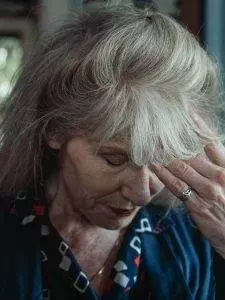
Other symptoms of POTS may include: tinnitus (ringing in the ears), blurred vision, red or purple appearance of the legs when standing up, and a “jittery” feeling or general nervousness.
As with many syndromes, different people will experience different combinations of symptoms. While dizziness and rapid heartbeat are the signs most commonly associated with POTS, many people with POTS will also suffer from abdominal pain and gastrointestinal problems, perhaps without realizing there is a correlation.
POTS symptoms may resemble many other conditions, such as:
- Chronic fatigue syndrome, ME/CFS
- Graves disease
- Other heart conditions that involve tachycardia
- Anemia
- Stroke
- Epilepsy
- Adrenal fatigue
- Drug use
- Eating disorders
- Benign paroxysmal positional vertigo
- Ménière’s disease
Because POTS is often misunderstood or misdiagnosed, many patients will be offered medications to manage headaches, vertigo, or depression, which may not offer much relief.
Medical Treatment for POTS
As there is no definitive cure for POTS, Postural orthostatic tachycardia syndrome treatments typically aim to manage symptoms and improve quality of life.
Dietary modifications are a fundamental component of POTS management. Adequate daily fluid intake is crucial. A diet that includes plenty of salt helps maintain blood volume, aiding blood flow to vital organs. Patients are typically advised to avoid alcohol and carefully monitor caffeine intake, as these substances can exacerbate symptoms.
Exercise is gradually introduced, often starting in reclined or horizontal positions, with the goal of increasing exercise tolerance over time. Physical therapy helps retrain the autonomic nervous system, enhancing blood circulation.
Compression garments can help reduce blood pooling, and specific postures while sitting or sleeping may alleviate symptoms. Identifying triggers such as prolonged sitting, heat, or certain drugs allows for better symptom control. Regular monitoring of blood pressure and pulse, along with adequate sleep hygiene, aids overall well-being.
While no single pharmacological solution is universally effective, some medications may be prescribed based on individual symptoms. These may help to improve blood volume, aid sodium retention, reduce heart rate, and enhance blood vessel constriction.
While POTS symptoms may intermittently improve with medications and lifestyle modifications, the underlying cause of POTS may persist. Acupuncture and TCM treatment can provide a holistic solution for individuals living with POTS, which may help to address the root causes of this syndrome.
Can Acupuncture Help POTS?
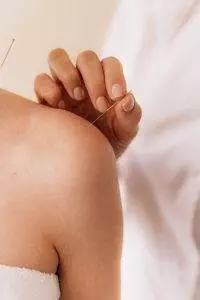
POTS is a kind of Dysautonomia; this is a general term that describes conditions that involve malfunctioning of the autonomic nervous system. This causes people’s bodies to have problems with regulating the sorts of functions that are typically automatic, like the beating of the heart, circulation of blood, breathing, and temperature control.
Western medicine offers some treatments that can help address individual symptoms of dysautonomia, but it does not have a way of treating the root of the problem. It can be difficult to get proper treatment, because people who suffer from POTS and other kinds of dysautonomia often seem reasonably healthy, and their complaints—dizziness, headaches, mental health problems—seem vague.
Acupuncture and TCM have been used to treat these kinds of problems for centuries. Acupuncture treatment can help provide positive effects on the subtle communications of the nervous system, as well as the heart rate, and physiological symptoms of anxiety. According to TCM theory, several organ systems may be involved and need support: not only the heart, but also the kidneys or spleen.
Studies have shown that acupuncture for dysautonomia can help relieve symptoms like heart palpitations, insomnia, and digestive problems.
A qualified acupuncturist is also well-versed in nutrition and can offer more detailed information regarding dietary and lifestyle changes that can help each individual patient. Your TCM provider will spend time learning more about you, so that they can offer personalized advice.
Acupuncture Near Me for POTS in West Los Angeles
TCM and acupuncture can help people with all types of autoimmune disorders, nerve disorders, and conditions involving fatigue and dizziness that may be difficult to solve with conventional methods. Acupuncture works on a deeper, more subtle level to help address complex syndromes. If you are regularly experiencing trouble with feeling light-headed, having unexplained headaches and sleep problems, it may be time to seek a more holistic alternative treatment.
*This article is for education from the perspective of Traditional Chinese Medicine only. The education provided by this article is not approved by FDA to diagnose, prevent, treat and cure human diseases. It should not stop you from consulting with your physician for your medical conditions. Traditional Chinese Medicine is based on Qi, which is an invisible force that usually cannot be observed by modern science. Because science focuses on testing ideas about the natural world with evidence obtained through observation, these aspects of acupuncture can’t be studied by science. Therefore acupuncture and Chinese herbs are often not supported by double-blind, randomized trials, and they are considered alternative medicine therapies in the United States.